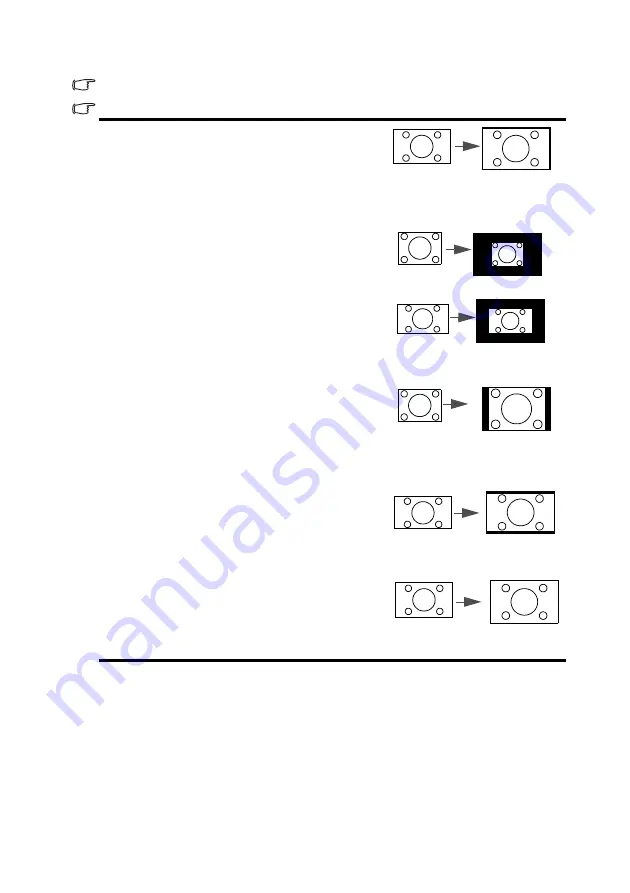
Operation
30
About the aspect ratio
In the pictures below, the black portions are inactive areas and the white portions are active areas.
OSD menus can be displayed on those unused black areas.
1.
Auto
:
Scales an image proportionally to fit the
projector's native resolution in its horizontal or
vertical width. This is suitable for the incoming
image which is neither in 4:3 nor 16:9 and you
want to make most use of the screen without
altering the image's aspect ratio.
2.
Real
:
The image is projected as its original
resolution, and resized to fit within the display
area. For input signals with lower resolutions,
the projected image will display smaller than if
resized to full screen. You could adjust the zoom
setting or move the projector towards the
screen to increase the image size if necessary.
You may also need to refocus the projector after
making these adjustments.
3.
4:3
: Scales an image so that it is displayed in the
center of the screen with a 4:3 aspect ratio. This
is most suitable for 4:3 images like some
computer monitors, standard definition TV and
4:3 aspect DVD movies, as it displays them
without aspect alteration.
4.
16:9
: Scales an image so that it is displayed in
the center of the screen with a 16:9 aspect ratio.
This is most suitable for images which are
already in a 16:9 aspect, like high definition TV,
as it displays them without aspect alteration.
5.
16:10
: Scales an image so that it is displayed in
the center of the screen with a 16:10 aspect
ratio. This is most suitable for images which are
already in a 16:10 aspect, as it displays them
without aspect alteration.
15:9 picture
4:3 picture
16:9 picture
4:3 picture
16:9 picture
16:10 picture






























